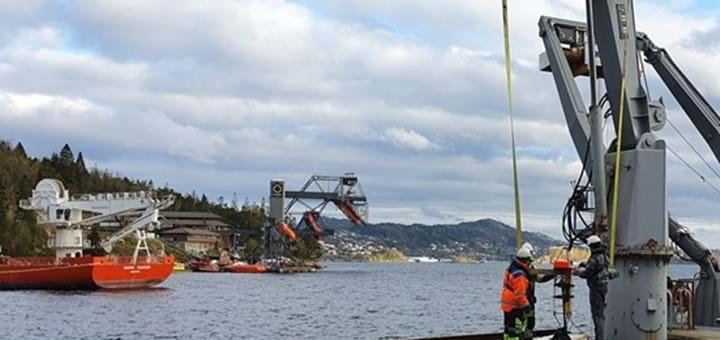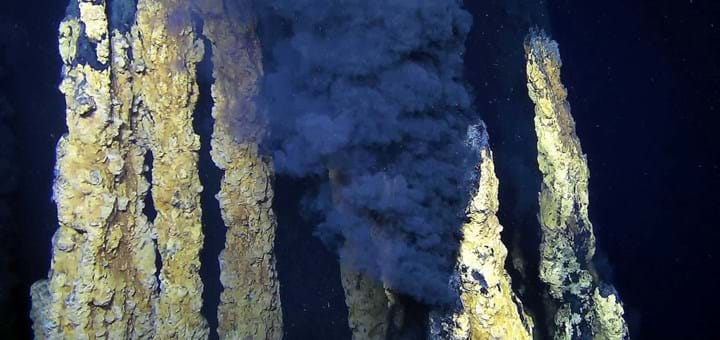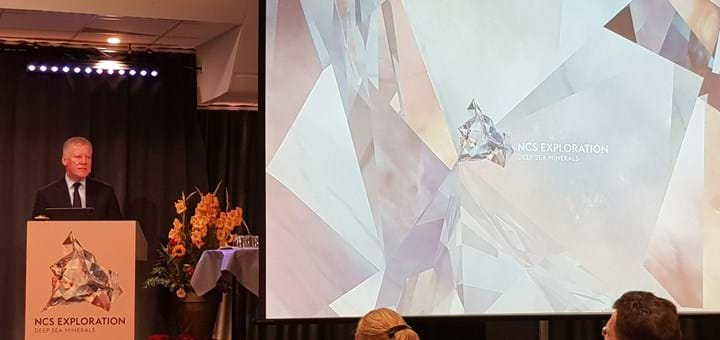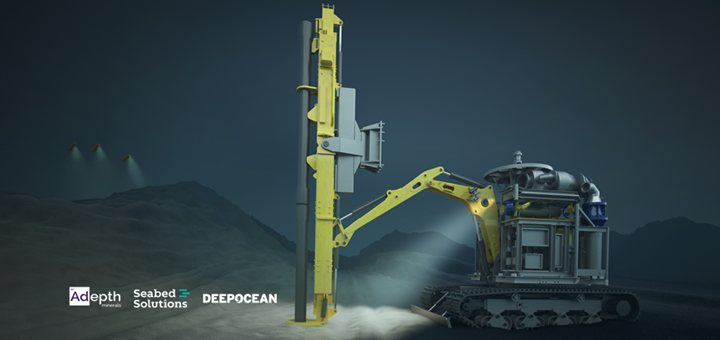A very interesting and timely project
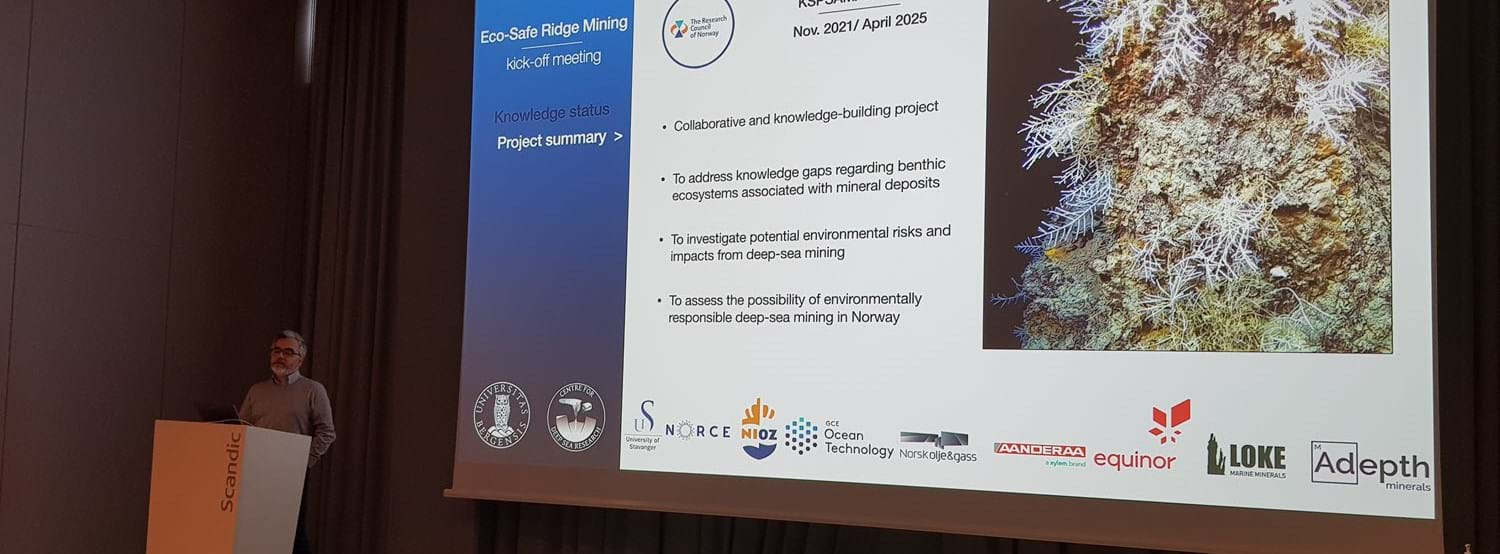
The Eco-Safe Ridge Mining Project has successfully kicked off. The aim is to fill key knowledge gaps about deep-sea ecosystems, identify environmental hazards and risks and appropriate mitigation actions regarding potential future deep-sea mining in Norwegian waters.
The Norwegian government is currently working on gathering knowledge status and making a first impact assessment related to possible future marine minerals activities.
– A better understanding of deep-sea ecosystems associated with seabed mineral deposits is crucial and timely to inform policy and management decisions. A key risk and challenge today is limited knowledge about environmental patterns and processes, says Pedro Ribeiro, deep-sea ecologist and project leader at the University of Bergen.
Addressing key concerns from the impact assessment
The project started at the end of 2021 and some initial work and first results were presented during the meeting. Steinar Sanni from the University of Stavanger presented 21 potential environmental hazards being raised in the ongoing impact assessment. Going forward these will be categorised, grouped and prioritised.
Extraction of different types of mineral resources will come with a different set of risks, challenges, technologies and mitigations. The present project is primarily focusing on seafloor massive sulphides from extinct hydrothermal vent activity on the Arctic Mid-Ocean Ridge. A main concern and contribution to risk today is the lack of knowledge.
Professor Phil Weaver is part of the project’s advisory board and has extensive experience from coordinating similar projects. Phil believes that most risks can be mitigated by careful selection of sites and acquiring more knowledge. Phil believes the project is very timely and results of this project are needed before mining begins, so proper environmental planning can be conducted. The environmental framework must take into consideration new knowledge and discoveries obtained along the way.
Integration is key
Many attendees highlighted the importance and the strength of the project by integrating several different disciplines and types of partners with complementary knowledge and perspectives.
Three research cruises are planned as part of the project and integrated in UiB’s Center for Deep-Sea Research annual cruise to the Arctic Mid-Ocean Ridge. These cruises will be key to gain new scientific knowledge about the environment and biological communities associated with Seafloor massive sulphide (SMS) deposits, while enabling a great collaboration arena to integrate knowledge in new ways.
Leon Moodley from NORCE presented initial test results from ecotoxicological studies performed. Seafloor massive sulphide (SMS) samples from previous cruises were used to test response of organisms to different level of exposure. The test setup and methodology are to a large extent based on work done with drill cuttings within the oil and gas industry and will further be used in effect studies with live organisms.
Norway has significant knowledge and expertise from other marine and offshore sectors when studying possible negative effects on vulnerable ecosystems such as coral gardens and sponge grounds and this knowledge will be of great benefit when exploring new industries.
High expectations
The different industrial partners expressed very high expectations for the project. Equinor has established a research programme internally to evaluate the mineral resource potential and to obtain a better understanding of the environmental risk and possible mitigation actions.
Adepth Minerals are currently developing a toolbox for exploration consisting of both equipment for coring as well as a data centric decision process. Their FlexiCore system received 11.7milllion NOK in a grant from Innovation Norway last year. The aim is significant higher core recovery rates vs. current solutions.
Basis for environmental management
Both the Norwegian Environmental Agency and the Norwegian Petroleum Directorate took part in the kick-off meeting. Norwegian authorities will be informed about the results of the project on a regular basis so that decision making regarding exploration and exploitation of the areas under Norwegian jurisdiction is based on best available knowledge.
GCE Ocean Technology are hosting various events within marine minerals, and we plan to provide updates from the project as we go along. We very much look forward to taking active part and see the results from this important collaboration project.
Contact Information


About
The Eco-Safe Ridge Mining project is a three-year long competence building project coordinated by the University of Bergen.
The total budget is about 18 million NOK, where more than 13 million are granted by the Research Council of Norway.
The study area is the Arctic Mid-Ocean Ridge, where seafloor massive sulphide deposits containing strategic metals co-occur with vulnerable habitats such as hydrothermal vents and sponge grounds.
The project partners are the University of Bergen, NORCE, the University of Stavanger, the Royal Netherlands Institute for Sea Research (NIOZ), Equinor, GCE Ocean Technology, Norwegian oil and gas association, Loke Marine Minerals, Adepth Minerals and Aanderaa Data Instruments.
Further Reading
Related Events
GCE Ocean Technology Events
Other events

